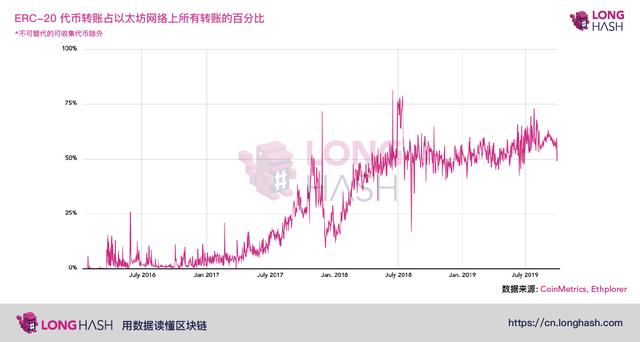Is ETH changing from digital oil to digital currency, is this really feasible?

There is no doubt that Ethereum (ETH) is the "king" of the altcoin. The use of the Ethereum blockchain far exceeds that of other non-bitcoin cryptographic assets, and its focused expressive smart contracts have been emulated by many other projects.
Bitcoin (BTC) is often referred to as "digital gold," and those who invest in ETH often call it "digital oil." However, more and more Ethereum users believe that Ethereum should not be regarded as oil, but should be regarded as currency.
More and more DeFi-based financial (DeFi) applications were launched in Ethereum last year, and the voice of Ethereum as a currency is getting higher and higher.
- Stable currency monthly report | USDC, DAI and other emerging stable currencies challenge USDT with DeFi scene?
- South Korea's blockchain company Iconloop receives $8 million in financing to build digital identity authentication services
- Decentralized communications startup New Vector received $8.5 million in financing, intended to replace WhatsApp, etc.
But will ETH be widely used as a currency? Let's take a look at the data.
Non-Ethernet's token transfer is increasing
A key useful data for tracking Ethereum as a currency is the percentage of transactions on the Ethereum network that involve the transfer of native ETH tokens.

As shown above, ERC-20 token transfers issued on the Ethereum blockchain are more common than ETH transfers. Since the summer of 2018, ERC-20 token transfers have been largely as common as ETH transfers (at least), but there are times when ERC-20 token transfers are more common.
Obviously, before the ERC-20 token standard was not developed, almost all transactions involved only ETH, because it was not particularly easy to issue new tokens on the Ethereum platform. Although 2017 is a year of crazy start for ERC-20 token-related activities, as early as May 28, 2016 (that is, the first day of DAO tokens trading on the exchange), ERC-20 tokens There has also been a wave of growth in transfers.
According to Ethplorer, Tether USD (USDT) has become the most popular non-native token on the Ethereum blockchain in the past few months. Previously, USDT only accounted for about 5% of Bitcoin's daily trading volume, but now, more and more USDT transfers are no longer based on the Omni protocol on the Bitcoin blockchain, but on Ethereum.
In the past few years, Ethereum has also witnessed the launch of other major stable currencies. Here are a few examples: Circle and Coinbase launch USDC stable currency; Gemini launches GUSD; TrustToken launches TUSD; Paxos launches PAX.
In addition, there is a DAI stable coin that has a highly decentralized attribute. However, whether the DAI has sufficient decentralization level to avoid the same problems as the traditional stable currency remains to be considered (the traditional stable currency is supported by legal tender in the bank account).
Soon after, Ethereum may handle more stable currency transfers per day than native ETH token transfers. According to Coin Metrics data, on September 9th, the Ethereum network handled 271,805 ETH and 178,046 USDT transfer transactions. In terms of adjusted chain trading volume, USDT trading volume is almost twice that of ETH.
According to Etplorer data, DCS tokens are another major player on the Ethereum network when writing this text, with approximately 20,000 blockchain transactions in the past 24 hours.
Trading volume, trading activity, volatility
Of course, just because ERC-20 tokens are active in Ethereum does not mean that ETH cannot be used to revolve or be used as currency. In other words, the current number of ETH daily transfers is comparable to the August 2017 level.
In the case of ETH as a currency, adjusted transactions in US dollars tend to be more interesting than simple transactions. In this respect, the situation does not seem to be very optimistic. In terms of the amount of transfer transactions, ETH's current transfer volume is roughly equivalent to the May 2017 level.
It should be remembered that most of the early cryptocurrency chain transactions are related to the exchange's trading activity. According to the analysis of Chainalysis, 90% of the activities on the Bitcoin network involve transfers between exchanges.
From Coin Metrics, it is clear that there is a correlation between ETH price movements (when trading volume tends to soar) and trading volume on the chain.
As I wrote before, when a particular cryptocurrency is used as a currency, the best measure of price is price volatility. Coin Metrics data shows that during the Ethereum network, ETH prices fluctuated dramatically, dropping from more than 10% to below 5%.
Bitcoin is the standard
Compared with other altcoin markets, it is clear that ETH is by far the best choice for Bitcoin. But if ETH wants to be a currency, it means it has to compete fiercely with BTC.
The success of the ERC-20 token has made the Ethereum chain's daily trading volume exceed Bitcoin, but when compared to other cryptocurrencies, this indicator is almost meaningless (for more information on daily trading volume indicators) For information, see the previous article).
Recently, Ethereum’s daily transaction fee (in US dollars) exceeded Bitcoin, a phenomenon that has caused widespread concern. However, this data is not intended to illustrate the potential use value of ETH as a currency, but rather to indicate the need to access the Ethereum network. ETH has the function of storing or exchanging media, but the user pays the fee to transfer USDT or Chainlink (LINK) tokens, which has nothing to do with the practicality of ETH.
When comparing cryptocurrencies as currencies, a better criterion is to look at the adjusted volume, volume, and price fluctuations in the chain. Although ETH's price volatility is smaller than BTC for most of the summer of 2019, if ETH wants to compete with BTC in other ways, it still needs to redouble its efforts.
Although prices can stabilize in the short term, in the long run, there is competition for money in terms of value storage or value-adding capabilities. Perhaps the most annoying point of view against the use of ETH as a currency is: BTC pricing, the current price of ETH is lower than the March 2016 price, that is, the Ethereine network was launched less than a year for the first time. Having said that, this September is quite polite for ETH, because this is the best period for the ABC to perform best for BTC.
Castle Island Ventures partner Nic Carter said that the altcoin, such as ETH, chose to avoid the focus of becoming a currency, but did not grasp the original intention of creating Bitcoin.
When ETH is used as a currency and its usefulness is compared with BTC, it is unclear whether the altcoin can overcome the first-mover advantage of Bitcoin, the network effect and its relative stability as a value storage tool.
Source | LongHash
LongHash , read the blockchain with data.
We will continue to update Blocking; if you have any questions or suggestions, please contact us!
Was this article helpful?
93 out of 132 found this helpful
Related articles
- Overview of blockchain application cases: health care and energy industry
- Internal and external, Libra can seek hope in the crack
- A text saying that IPFS: What is the expectation of Filecoin?
- The judge made a favorable Bitfinex ruling and rejected the file request filed by NYAG
- Monthly Report | September Domestic and Foreign Blockchain Policy: Virtual Currency Mining Supervision Strengthens Legal Digital Currency Multi-Country Support
- Zuckerberg "Second Palace" attends the hearing Libra can break through the blockade
- September public chain observation: How to treat Bitcoin mining after the market?






